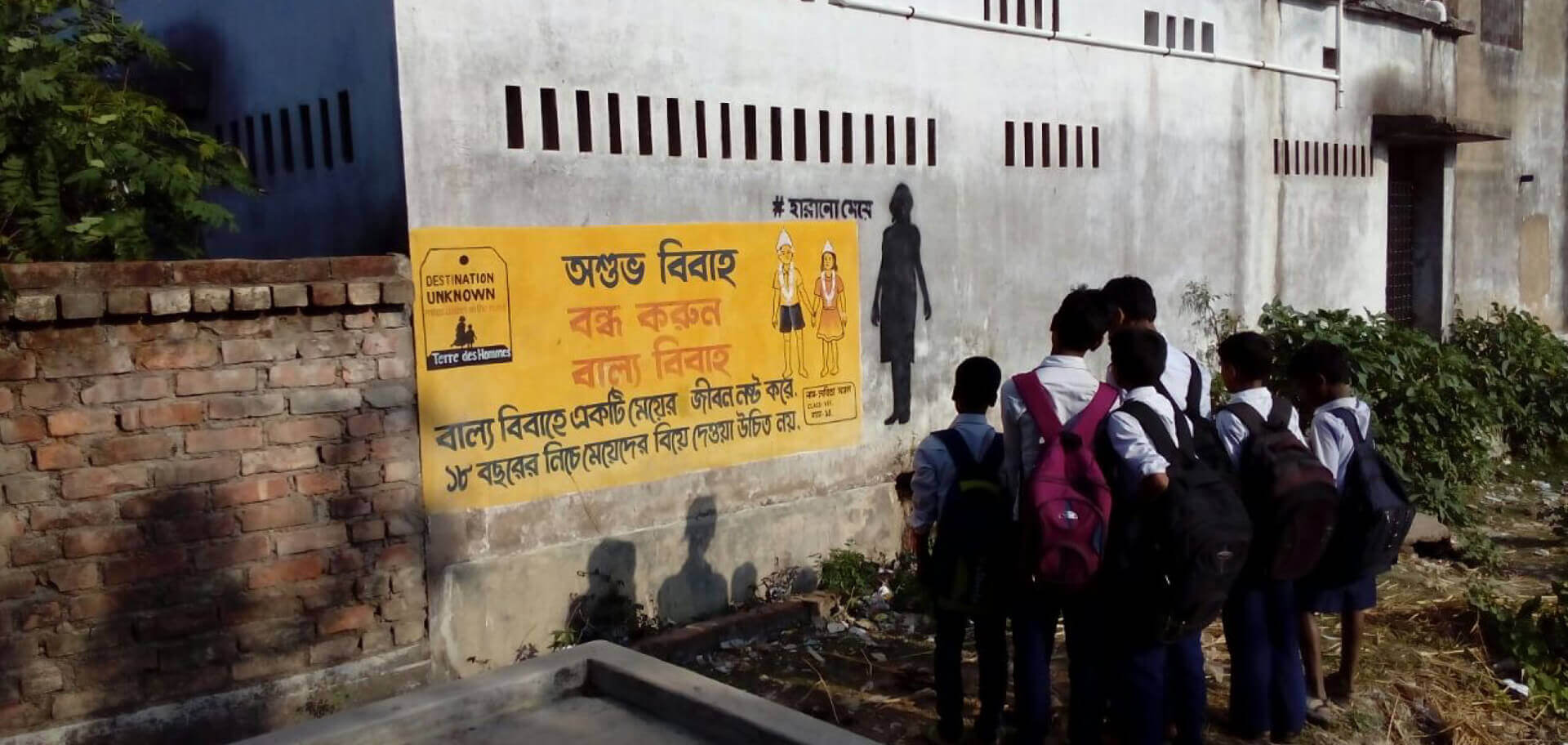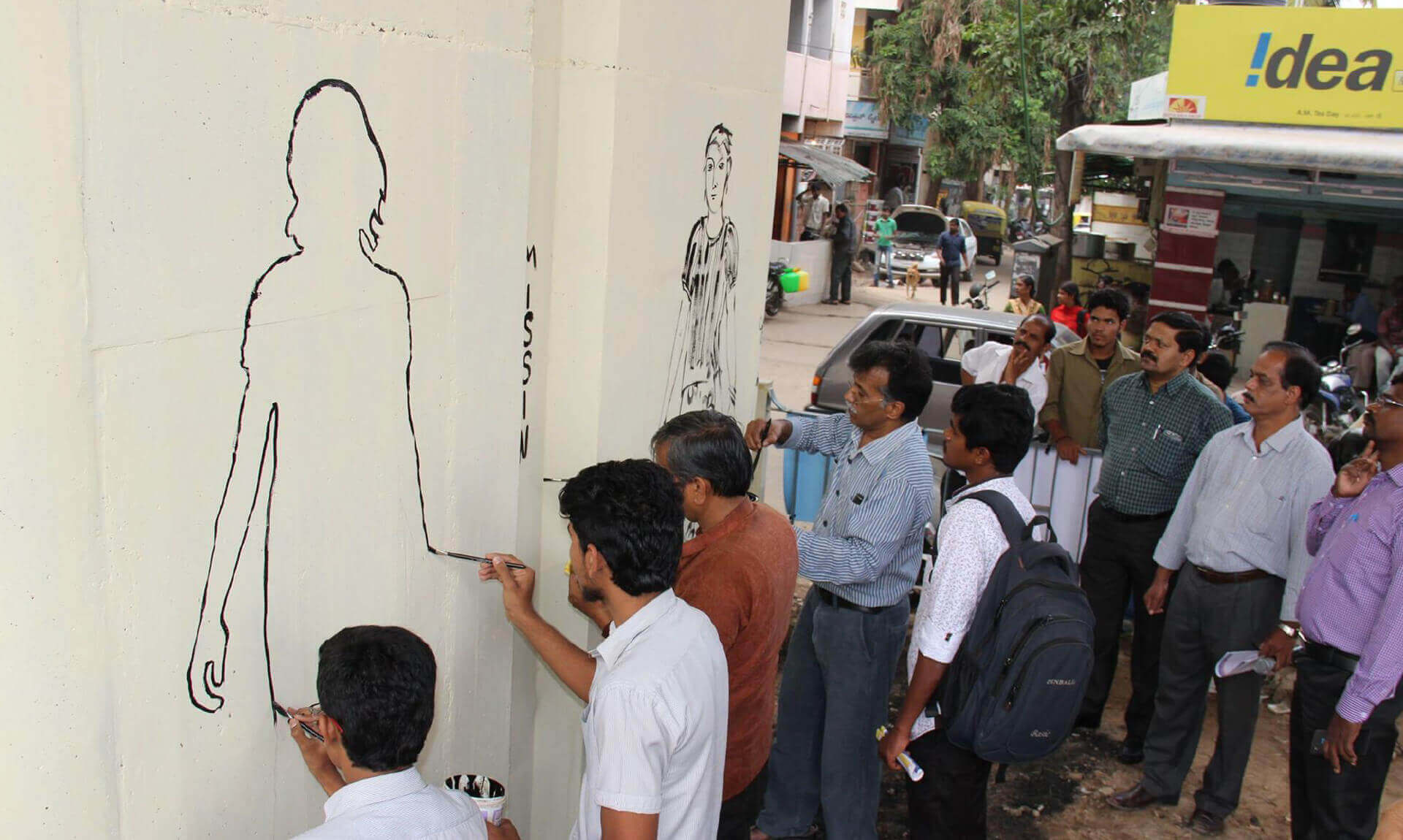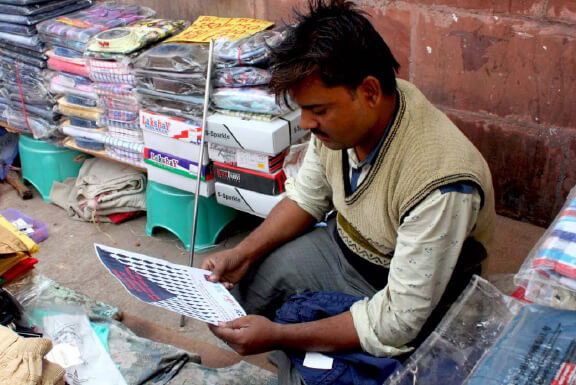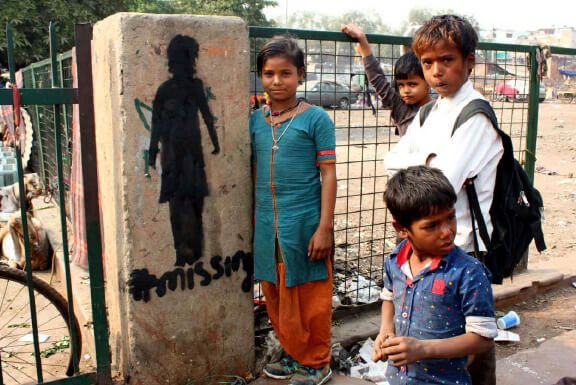
Frequently Asked Questions
- What was the inspiration behind Missing Link Trust?
Missing Link Trust was founded by Leena Kejriwal, an artist and a photographer. Her family’s residential address in Kolkata, is on the main road behind which is Sonagachi, one of the largest red light districts in Kolkata. She came to know of what a red light district constitutes early on. She heard narratives of girls and women who were caught and put there. Every time her car passed the lane she was told not to look ‘that side’. Furtive glances gave her glimpses of girls and ladies standing on the roadside.
It was much later as a photographer during one of her walks in the city, that she first entered a red light district. She entered with a deadpanness and an open heart, not the curiosity which the place holds for many.
The empathy was there but something urged her to do something about it beyond it. After that first visit to Kalighat, she had multiple opportunities to visit and help her friends who ran NGOs in the area. What Leena found really disheartening was that the number of girls entering these areas did not decrease. She saw her friends struggle with the empowerment and education of the ladies and the girls, but new cases kept coming in. The root cause they all saw was the demand. It was simple economics. Where there is a demand there will be a supply. The demand adds to the lucrativeness of it, hence traffickers move in to supply the girls and make a lot of money.
And it was then that she was hit by a very important issue – sex trafficking. Today, there are 3 million prostituted women in India, out of whom 1.2 million are young girls. The average age of recruitment of girls into prostitution is between 9 and 12 years of age. These are disturbing statistics.
Her deep empathy for the girls started to reflect itself in her work as an artist. She dealt with the issue by creating complicated installations within gallery spaces that brought up the dark realities of sex trafficking in a very graphic way. But this did not seem right. To create mass awareness, she realised she needed to distill the issue into a simple, engaging piece of art that spoke to everyone and transcended language and space. That is when the public art project MISSING emerged. MISSING was finally launched and received great reviews at the India Art Fair in January 2014.
- What is our vision?
A world where every girl is safe from sex trafficking.
- What is our purpose?
We want Missing to be synonymous with awareness and prevention of sex-trafficking. We want our engagement to provide knowledge as an arsenal to children, women, young girls and boys so that they can avoid becoming victims of trafficking or contributing to it. Parallelly, through all our projects we want to have an undercurrent running across our programs that moulds the minds of young men and boys in India into de-objectifying the female human body and creating more sensitive and empathic youth towards gender differences. Further, it would also create a more compassionate view of the survivors of sex-trafficking. One of the last key things is also to create an environment among young girls where they declutter their concept of femininity, which is currently overridden by the masculine gaze.
We aim to execute and reinforce this purpose through not only our campaigns but also primary insights through data trends generated in-house that will support and validate our endeavours. This will eventually help Missing realise its vision and also enable it to become an important catalyst in influencing policy-making at the government level.
- How does Missing work?
Missing Link Trust works is primarily based on its three key pillars – Innovation, Education and Empowerment. We use innovative mediums like gaming, murals, public art and comic to create a highly immersive and empathic experience on sex trafficking. We educate for creating a new social fabric to end demand by systematic awareness programs amongst school children. We empower the most vulnerable women and girls in Sunderbans through skill training and livelihood to prevent sex trafficking. The flow of trafficking of victims is primarily from Eastern to Western India i.e. from the poorer Eastern states to the demand-making cities in the Western states. To curb this flow, we create awareness at the school and community level among vulnerable girls and women and community members. We focus on the linkages between child marriage and trafficking to create a more vigilant community. While reducing vulnerabilities is a complex process, it requires elements of empowerment. Missing creates digital literacy to bridge the massive gap in communication and flow of information between rural and urban pockets. In addition, we generate livelihood for women in high trafficking zones through a bag-making unit in the region.

- Why are MISSING campaigns necessary across communities?
Every community needs to be made aware of and included in this campaign, because it is critical for everyone to be aware of their trafficking foot prints and how one is responsible for creating the demand for purchased sex. The horrific supply and demand chain leads to human trafficking of vulnerable women, underage girls and boys.
- Who are our Partners?
Missing Link Trust works across the board with partners, artists and other nonprofit organisations. Please visit our partner section to know more details.
- How has crowdsourcing helped you raise funds for the project?
Public engagement in today’s times goes hand in hand with the online world. We opted for crowdfunding to raise funds for the project to use the reach of the virtual world to our advantage and have the masses, for whom this project is being done, be a part of it from the start.
In India, there is very little funding for public art from the government and corporate sector. This was a chance to prove that there is a desire and need to use art to fight social problems. We managed to successfully execute two crowdfunding campaigns – the first one with a target of Rs 16 lakhs in 60 days on Wishberry, which was used to create the first set of installations and develop the MISSING Game for the Cause (game 1) and a second crowdfunding kickstarter campaign for MISSING: The Complete Saga (game 2) for USD 50,000.
- How can I play the Missing Game?
The MISSING Game for a Cause (game 1) is available for free on Android and Apple Playstore. You can also click on the game icon at the top of the page to download the same. Game 2 will be released in late 2020.
- Will I be able to play even if I don’t understand English?
The MISSING Game for a Cause (game 1) is available in 12 vernacular languages and 6 international languages. You can choose the language of your choice from the start menu once you download the game.
- What social media platforms does MISSING use?
We are active on Facebook, Instagram, Linkedin and Twitter. We find social media to be an essential tool in spreading awareness and engaging stakeholders across the world.
- Is MISSING a global campaign?
Missing Link Trust offices are present in Sunderbans, Kolkata and Mumbai. However, MISSING is now a worldwide project with organic growth of followers since we began. We have rescuers and survivors from the trade, who advise and help spread awareness. We are also in touch with students from schools and colleges worldwide, who feel the urge to be a part of this special awareness campaign and of course, we work side by side with the general public, for whom this campaign is being executed.
What makes MISSING unique is the message behind our simple yet hard-hitting public art which we use as a visual metaphor for society’s negligence. We are using the #Missingirls Stencil campaign and MISSING Game for a cause to create awareness against sex trafficking across the globe.


- How can I volunteer with MISSING?
We are always on the lookout for students and professionals across ages who can volunteer to spread awareness against human trafficking. You can fill in our volunteer form or even download and use the Missing Stencil Kit to be a part of the campaign.
- How can I donate to MISSING?
Thank you for your interest to help the #Missingirl movement. If you are an individual, please visit our Donate page. If you are a corporate or a group, please check the Partnerships/CSR Opportunities section for more information. Your contribution will go towards creating a safer environment for millions of young girls and empowering vulnerable women in heavily trafficked areas through livelihood projects and employment generation.
- How can my company or organization join hands with MISSING?
We appreciate your interest to take MISSING to a whole new level! We love working with companies who believe helping people as part of a great business model. Please visit our CSR Opportunities section or just drop us a line with your interest at reachus@savemissinggirls.com and we will quickly follow up to see how we can join hands and help vulnerable women and girls through awareness, education and skill training in our against sex trafficking.
- How can I cover MISSING as a journalist, filmmaker, writer, media?
Our relationship with the press has been a very organic process. We would love to hear from you! You can download our Media Pack and write to us at reachus@savemissinggirls.com or leena@savemissinggirls.com for further contact and information request.
- What are some important emergency numbers I should always have on my phone?
In addition to the local AHTU (Anti Human Trafficking Unit) police number, you should keep the following
numbers handy:
- Police – 100
Ambulance – 102
Women’s Helpline – 181
National Emergency Hotline – 112
Anti Corruption Helpline – 1031
Women in Distress – 1091
Child Abuse Hotline – 1098
Indian Railway Security Helpline – 1322
AIDS Helpline – 1097
Maritime Search and Rescue control room of coastal guard – 1718
Dial A Doctor – 1911